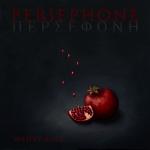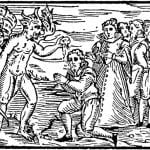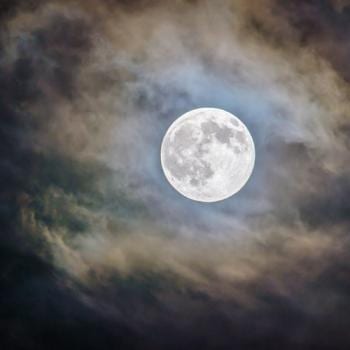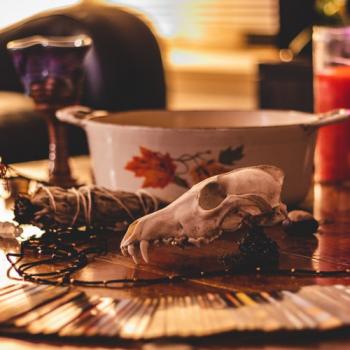As we head further into the Summer Tide, I find that the Fair Folk are increasingly more active – or at least making themselves more known to we humans. Due to the increase in Fae activity, there is always an influx of articles being written regarding these Spirits during this time of year. However, as of late I’ve noted these articles convey overwhelming negative messages regarding the Faeries. Now most of us know that there is way more to the Fair Folk than what is popularly depicted in Disney films or Victorian Era artwork. But what I find really fascinating is the amount of push-back these articles present, urging readers to become enlightened about the true nature of the Fae. Departing from the saccharine idea image of whimsical, glitter-winged beings of benevolence, we have swung to the other end of the spectrum. Here we find Faeries who are sinister, with a penchant for kidnapping and homicide. Now I will admit that there is some truth in this dark depiction of the Fair Folk. When you look into classical folklore you will be quick to discover that Faeries are not all sunshine and sparkles. But the presentation of the Fae as malicious fiends is completely one-sided. These Spirits are nothing if not complex, and to try pigeonholing their nature is damn near impossible. Yet readers are adamantly told told avoid Faeries at all costs and those who desire an alliance are harshly written off as foolish and arrogant. However, while the folklore does show that the Fair Folk can be dangerous, it also makes one thing abundantly clear – Witches have always had an undeniably close relationship with Faeries.
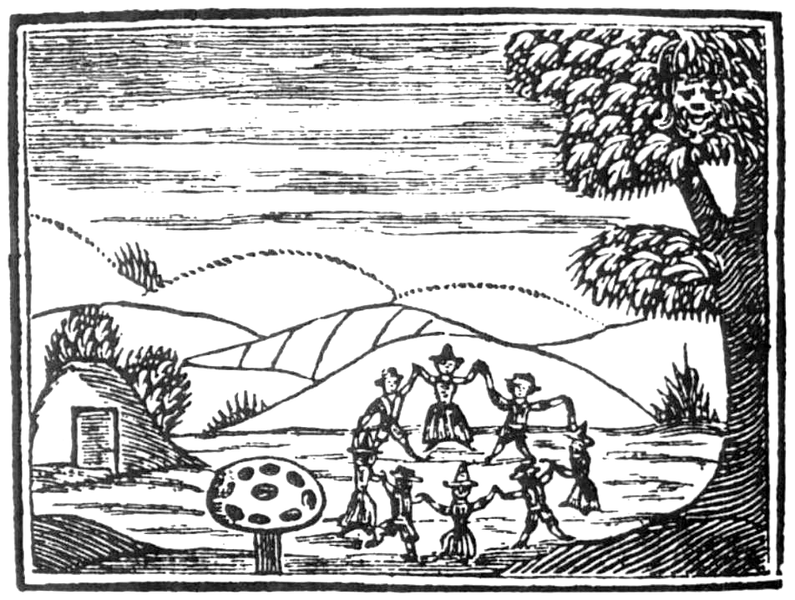
There are many possible reasons for the companionship Witches have had with the Fair Folk. These theories attempt to explain why Witches, unlike most mortals, are able to safely commune with Faeries and walk in their world without inherent consequences. One of my favorite hypotheses – which was recorded by modern writer John Garland – comes from an Exmoor Cunning Man who said that Witches are Faeries half reborn in human-form. Of course there is also the fact that Witches of folklore (and today) work with the Devil, who was often named King of the Fae. Furthermore, in modern Traditional Witchcraft the Witch Mother is seen as the Queen of Elfame herself. If nothing else, perhaps it is our intimate relationship with the land that brings us closer to the Fair Folk. Unlike many mortals, Witches generally have a deep respect for the natural world and are innately more aware of it’s hidden power.
Contrary to popular sentiments that Faeries are not to be worked with, the folklore of Witches demonstrates otherwise. John Walsh of Dorset confessed in 1566 that he would freely consult with the Fair Folk in the hills at noon and midnight. Agnes Hancock of Somerset confessed in 1438 that she sought the advice of the Fae whenever she pleased. In addition to verbal consultation, it appears Witches were also welcomed on occasion into the Faerie Realm. Whereas other mortals typically only entered the Faerie Realm via kidnapping or other trickery and not allowed to leave thereafter, Witches were free to enter and to leave. An unnamed Witch from Yorkshire – who’s story was recorded by John Webster – confessed in 1653 that a finely dressed woman led him into a hill wherein was a great hall occupied by many Faeries. Then there was Isobel Gowdie who claimed to to have met with both the Queen and King of the Fae at their home in the Downie Hill.
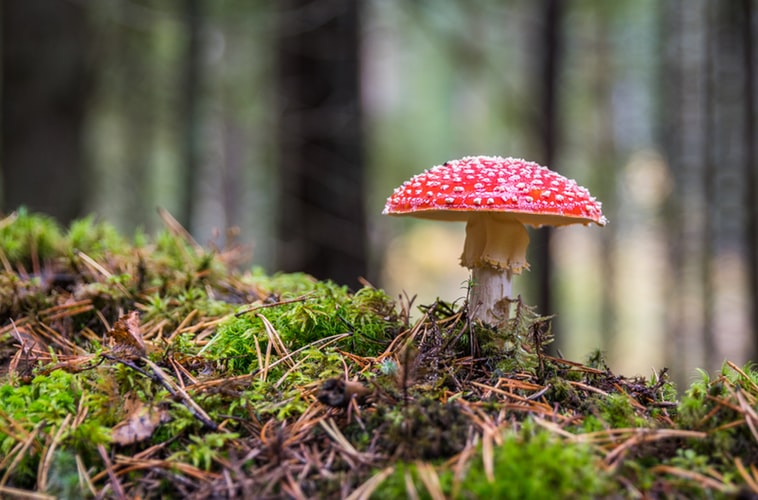
Witches who allied themselves with the Fair Folk often found themselves blessed with special abilities or otherwise assisted in their magical work. Bessie Dunlop confessed in 1576 that her Faerie Familiar, Thom Reid, taught her which herbs to use when healing others. Anne Jefferies of Cornwall, who was tried in 1645, was sought out by many for her renowned healing powers which she explained were the result of her interactions with Faeries. Isobel Sinclair confessed in 1633 that she had dealings with the Fae who taught her about the nature of the world and blessed her with second sight. Elspeth Reoch confessed in 1616 that a Faerie man taught her how to see anything she desired. These skills were useful as means for making a living as Joan Tyrry explained in 1555, the Fair Folk “taught her such knowledge that she getteth her living by it.”
From these brief examples, we can see that although many people feared the Faeries, Witches have appeared to work with them just fine. But what about modern day practitioners? What do you do if you wish to work with the Fair Folk? My advice is as follows:
- Do Your Research Upfront! While I do believe that it’s more than possible to work harmoniously with Faeries, it’s vital that you know what you’re getting into. The Fae can be capricious and temperamental, meaning they can easily be offended. There is much in the way of helpful lore regarding proper etiquette when engaging with the Fair Folk. As with any other type of Spirit you may wish to work with, you’re going to want to do your research ahead of time in order to avoid potential faux-pas.
- Be Polite! It’s unlikely that you’ll be able to completely avoid ever offending a Faerie. Thus, the best thing you can do is to be polite and courteous – although the folklore advises us to be wary of verbally thanking the Fair Folk which they can find dismissive (I opt for a kind smile). Remember that developing healthy relationships takes time and dedication. Don’t go in making demands of the Fae, they are not slaves and do not owe us anything. Instead take it slow, communicating with respect and humility.
- Remember Reciprocity! Like any other relationship, the one you might develop with the Faeries is going to be a two-way street – meaning there will be a give and take. The Fair Folk may do you a favor but you will then owe them. However, offerings of milk and honey won’t always cut it and you might find yourself having to sacrifice something much more dear to your heart. Thus, I highly recommend communicating with the Fae and asking what they would like in return for a favor before agreeing to anything!
- Protect Yourself! It would be foolish to not include this step. Keep in mind that not all Faeries, like other Spirits or even human-beings, will have your best interest in mind. Therefore, connecting back to my first piece of advice, know how to keep yourself safe from those Fae which have malicious intent. Keep a piece of iron nearby, carry st. john’s wort or rowan berries, and turn a piece of your clothing inside out.
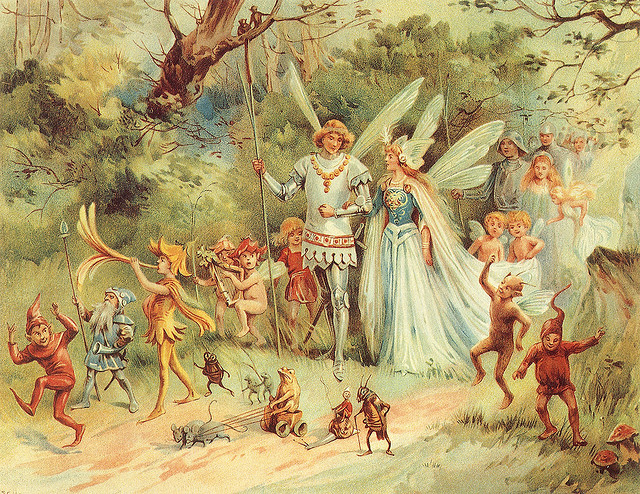
The Fair Folk have long been feared and respected. Folklore tells us many grim stories about mortals being tricked, kidnapped, injured, and even killed at the hands of Faeries. Displeased with the modern understanding of the Fae as diminutive creatures who grant wishes and bring joy to our lives, many people are turning to the classical lore as a means of pushing back against this benign characterization which they view as both naive and harmful. However, in their pursuits they have simply gone from one extreme to another – attempting to apply labels and human morals to Otherworldly beings who simply refuse to be put in a box. Whether purposefully or not, the argument that the Fair Folk are sinister and not to be trusted ignores the nuances of these Spirits and the lore itself. It overlooks the long history of Witches and Faeries working side-by-side. When approached with knowledge and reverence, the Fae can be some of the most invaluable teachers and magical allies, helping us to understand the powers of enchantment and the workings of both the natural and Otherworld. Let us not forget that!

